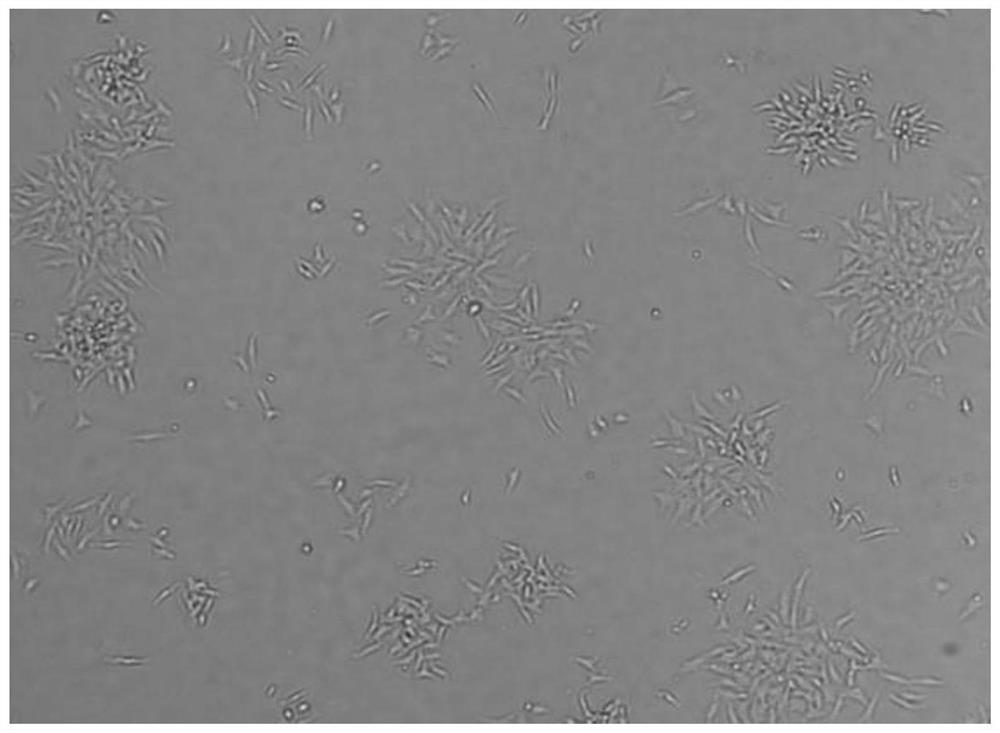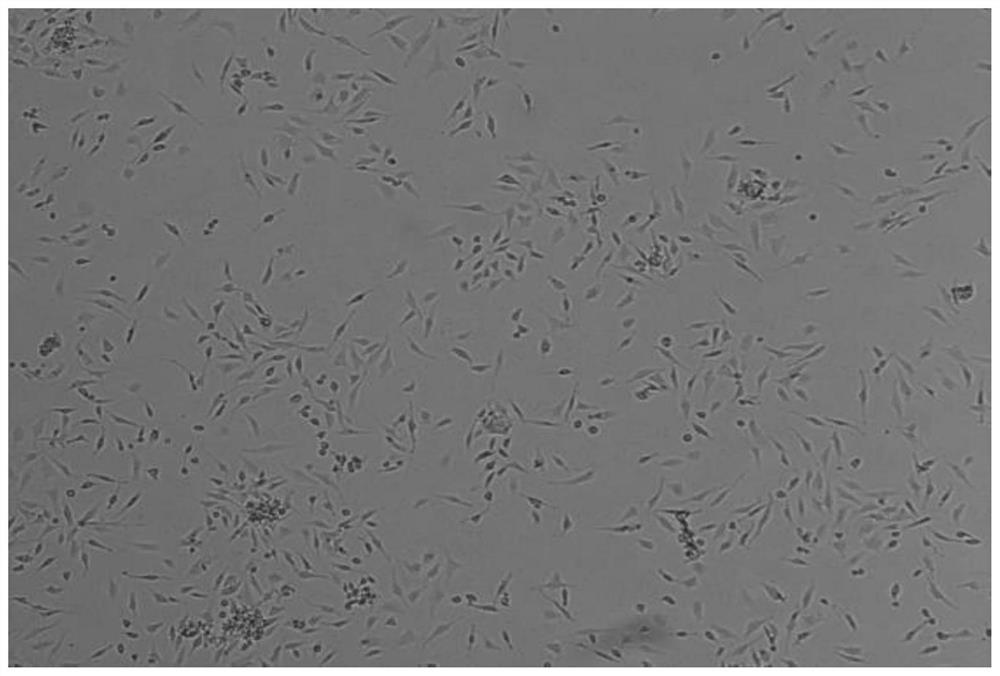Sheep ovarian granular cell separation, culture and identification method
A technology of granulosa cells and separation methods, which is applied in the field of cultivation and identification, and the separation of sheep ovary granulosa cells. It can solve the problems of cell pollution, uneven staining, waste of follicle fluid, etc., and achieve the effect of high acquisition rate and low pollution rate
- Summary
- Abstract
- Description
- Claims
- Application Information
AI Technical Summary
Problems solved by technology
Method used
Image
Examples
Embodiment 1
[0045] (1) Kill the adult sheep by neck bleeding, collect the ovaries, wash and disinfect them with alcohol, and place them in preheated normal saline (containing 1% double antibody, 100 U / mL penicillin and 100 μg / mL streptomycin) (37 ℃) to the sterile room within 2h-4h.
[0046] (2) Soak the ovary collected in step (1) in 75% alcohol for 10 seconds, wash it with 37°C normal saline three times, remove excess fat and mesentery on the ovary, wash it with 37°C normal saline three times, and transpose 10mL DMEM / F12 complete medium prepared in a clean bench [DMEM / F12 (45mL) + FBS (5mL) + double antibody (500μL, the double antibody includes 100U / mL penicillin and 100μg / mL streptomycin) + 50 μg / mL sodium pyruvate (1 μL)], cut 3-7 mm follicles with a blade (eg figure 1 shown), release follicular fluid, and operate under the liquid surface throughout the process.
[0047] (3) Place the cell culture medium suspension in a 15mL centrifuge tube, centrifuge at 1500r / min for 10min, discar...
Embodiment 2
[0050](1) Kill the adult sheep by neck bleeding, collect the ovaries, wash and disinfect them with alcohol, and place them in preheated normal saline (containing 1% double antibody, 100 U / mL penicillin and 100 μg / mL streptomycin) (37 ℃) within 4 hours to transfer to a sterile room.
[0051] (2) Soak the ovary collected in step (1) in 75% alcohol for 10 seconds, wash it with 37°C normal saline three times, remove excess fat and mesentery on the ovary, wash it with 37°C normal saline for 5 times, and transpose 10mL DMEM / F12 complete medium prepared in a clean bench [DMEM / F12 (45mL) + FBS (5mL) + double antibody (500μL, the double antibody includes 100U / mL penicillin and 100μg / mL streptomycin) + 50 μg / mL sodium pyruvate (1 μL)], cut 3-7 mm follicles with a blade, and release follicular fluid.
[0052] (3) Place the cell culture medium suspension in a 15mL centrifuge tube, centrifuge at 1500r / min for 10min, discard the supernatant; wash the pellet with PBS, centrifuge at 1500r / mi...
Embodiment 3
[0055] (1) The adult multiparous sheep were sacrificed by neck bleeding, and the ovaries were collected and placed in preheated normal saline (37°C) (containing 1% double-antibody, 100U / mL penicillin and 100μg / mL streptomycin) within 4h Transfer to a sterile room.
[0056] (2) Soak the ovary collected in step (1) in 75% alcohol for 10 seconds, wash it with 37°C normal saline three times, remove excess fat and mesentery on the ovary, wash it with 37°C normal saline for 5 times, and transpose 10mL DMEM / F12 complete medium prepared in a clean bench [DMEM / F12 (45mL) + FBS (5mL) + double antibody (500μL, the double antibody includes 100U / mL penicillin and 100μg / mL streptomycin) + 50 μg / mL sodium pyruvate (1 μL)], cut 3-7 mm follicles with a blade, and release follicular fluid.
[0057] (3) Place the cell culture medium suspension in a 15mL centrifuge tube, centrifuge at 1500r / min for 10min, discard the supernatant; wash the pellet with PBS, centrifuge at 1500r / min for 10min, disca...
PUM
 Login to View More
Login to View More Abstract
Description
Claims
Application Information
 Login to View More
Login to View More - R&D
- Intellectual Property
- Life Sciences
- Materials
- Tech Scout
- Unparalleled Data Quality
- Higher Quality Content
- 60% Fewer Hallucinations
Browse by: Latest US Patents, China's latest patents, Technical Efficacy Thesaurus, Application Domain, Technology Topic, Popular Technical Reports.
© 2025 PatSnap. All rights reserved.Legal|Privacy policy|Modern Slavery Act Transparency Statement|Sitemap|About US| Contact US: help@patsnap.com



